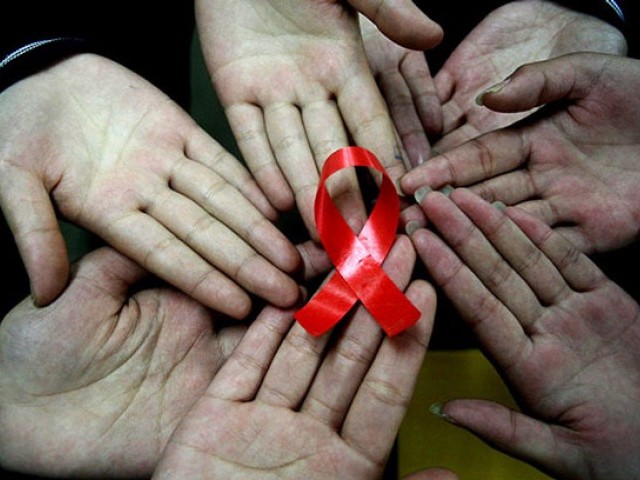
Moreover, it noted that the infection was primarily prevalent among drug users and among those who were involved in commercial sexual activities.
Punjab home to majority of Pakistan’s AIDS patients
The fifth National Integrated Behavioural and Biological Surveillance (IBBS) 2016-17 study was launched in Islamabad on Tuesday. The study was conducted by the National AIDS Control Programme in collaboration with the UNAIDS and Global Fund in 23 cities and towns of the country after four years.
The HIV infections, which can lead to acquired immune deficiency syndrome (AIDS), continues to grow in the country with an estimated 133,529 people infected – less than even one per cent of the 207 million inhabitants of the country. Of these, around 66,059 HIV infected people live in the Punjab, 56,949 in Sindh, 7,318 in Balochistan and 3,203 in Khyber-Pakhtunkhwa.
Although HIV prevalence in the general population remains less than a percentage point, an increase in prevalence has been noted in all key populations. The study warned that there was a risk of it spreading among the general population through sexual networks.
The study noted that HIV prevalence was highest among people who inject drugs at a rate of 38.4 per cent, people who are transgender sex workers were second with 7.5 per cent, male sex workers at 5.2 per cent, and men having homosexual intercourse at 5.1 per cent. Curiously, female sex workers were lowest rated among the at-risk groups at 2.2 per cent.
Although the magnitude and timing of the spread of HIV are varied in various cities and provinces, the study noted that the epidemic in Pakistan does seem to follow a particular pattern which is similar to a rapidly propagating Asian HIV epidemic – something which has already been seen in the region before.
Child treated for HIV at birth remains virus-free years after final treatment
It noted that even though Sindh lagged behind Punjab in infections, it was suffering the most with sub-epidemics seen in all key populations in most major cities.
The study suggested that it was merely a question of time that Punjab too would face similar or even larger sex-driven HIV epidemics unless steps are taken to counter it.
Men who have sex with men
Men who have sex with men (MSM), including male sex workers (MSW), have come out as the largest group infected by HIV after drug users and sex workers.
The study mapped 23 cities and found that there were around 8,606 geographical spots where an average of 46,264 men (ranging between 39,273 and 53,257) who have sex with men congregate. Karachi reported the largest concentrations of MSM with an average of 18,361 MSM mapped at 3,495 spots.
The second largest MSM estimates were identified in Lahore with an MSM average concentration of 5,471, followed by Multan at 4,265.
However, the study warned that the overall number of MSM could be much higher than the estimates, owing to reduced visibility due to the overall stigma and discrimination attached to their nature.
Apart from the location-spot based MSM, another 27,986 MSM were estimated using virtual mapping – or MSMs who use the internet to look for partners. The study estimated that Karachi was a hub with an estimated 10,404 MSM using the internet, followed by Lahore 5,232 and Rawalpindi was third at 4,258.
Fast-track strategy needed to fight HIV epidemic in Pakistan
It was also noted that a larger proportion of MSM in larger cities used multiple MSM-related websites to seek partners, in contrast to smaller cities and towns, were comparatively smaller proportions of MSM used multiple websites and social media platforms. They also reported having more than one identity on a website.
United Nations Resident Coordinator Neil Buhne said that the study shows that Pakistan is at a crucial stage where HIV is growing but a capacity to reverse it also exists. He added that Pakistan can build on the result of the survey and the experience of the regional countries with high prevalence to scale-up the response.
UNAIDS Pakistan Country Director Dr Mamadou Sakho said that while the number of new HIV infections has declined globally over the past decade, Pakistan remains one of the few regional countries witnessing an increase in cases.
He suggested that lessons from the national polio eradication strategy can help tackle the HIV epidemic.
Published in The Express Tribune, October 4th, 2017.




1732538123-0/BeFunky-collage-(90)1732538123-0-165x106.webp)

1732530440-5/Copy-of-Untitled-(85)1732530440-5-270x192.webp)



1732534225-0/Express-Tribune-(13)1732534225-0-270x192.webp)






COMMENTS
Comments are moderated and generally will be posted if they are on-topic and not abusive.
For more information, please see our Comments FAQ